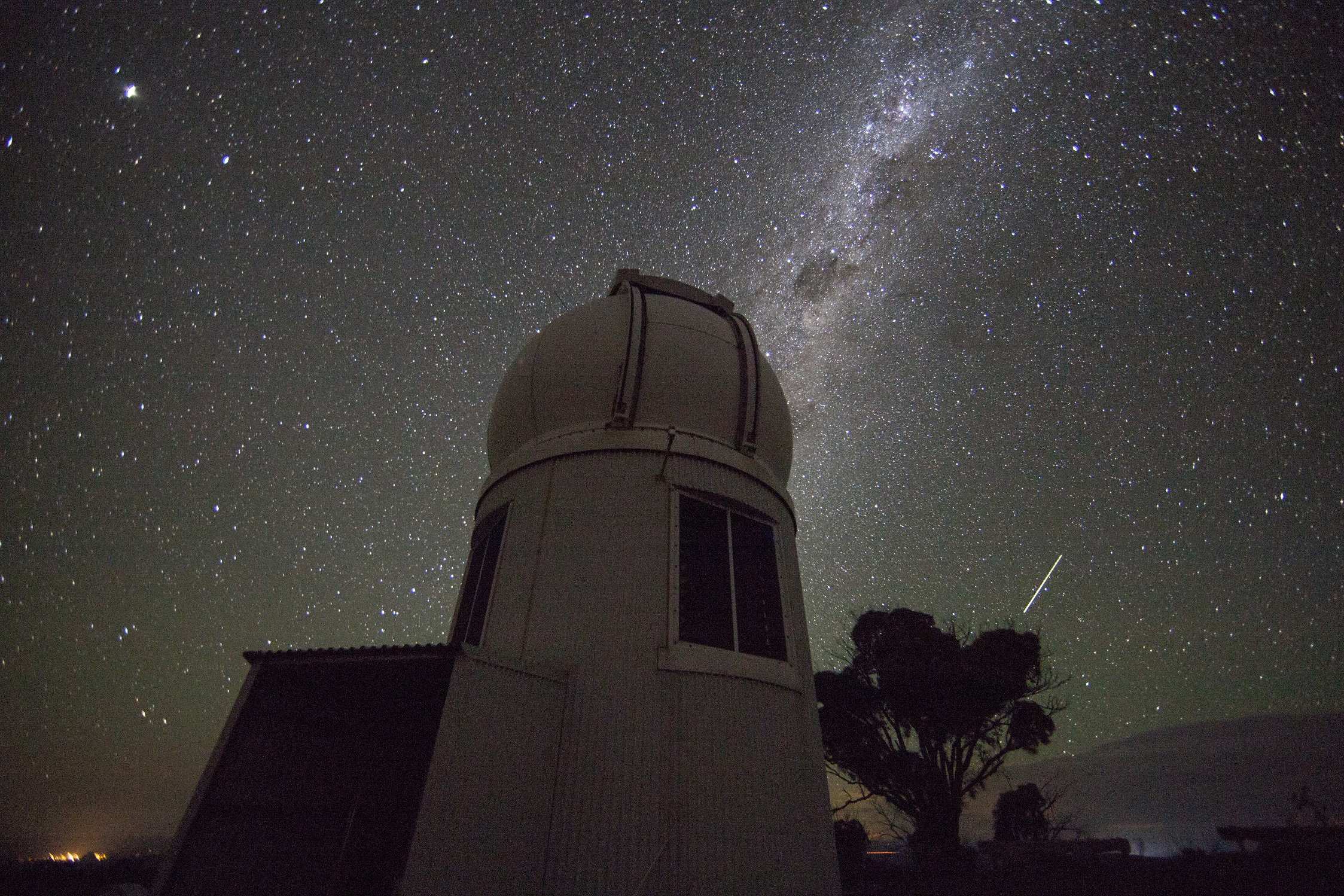Telescopic view on history
Professor Susan Scott from the ANU Research School of Physics and Engineering was working at home late one night, when she received an extraordinary message from LIGO, the Laser Interferometer Gravitational-Wave Observatory in the USA.
Professor Scott is not unfamiliar with the extraordinary: ANU was a key player in the ground-breaking research which saw LIGO detect gravitational waves resulting from a black hole collision. But this message was different. She read it again to be sure.
Making its way through space and time, via the rippling of gravitational waves, LIGO appeared to have recorded the collision of two neutron stars, 130 million light years away, for the first time ever.
The SkyMapper and 2.3-metre telescopes at the ANU Siding Spring Observatory in northern NSW were immediately alerted and set to scan for the resulting light signal. SkyMapper then became one of the first telescopes in the world to confirm it.
“We saw the light from a fireball blasting out from the neutron star collision into space in the hours and days afterwards,” says Dr Christian Wolf from the ANU Research School of Astronomy and Astrophysics.
"When I saw the colours I realised this was unlike anything we'd seen before."
“SkyMapper was the first telescope to report the colour of the fireball, which indicates its temperature was about 6,000 degrees Celsius - roughly the surface temperature of the Sun.”
Constructed and operated by ANU, SkyMapper is a state-of-the-art, wide-field survey telescope. This is not its first entry into the history books.
In 2014, ANU astronomers used early data taken with SkyMapper to discover the oldest known star in the Universe. In 2017, they released the most comprehensive map of the southern sky ever produced, also thanks to the telescope.
For SkyMapper, Dr Wolf says, “this is only the beginning”.
Find out more about ANU research in astronomy and astrophysics.

